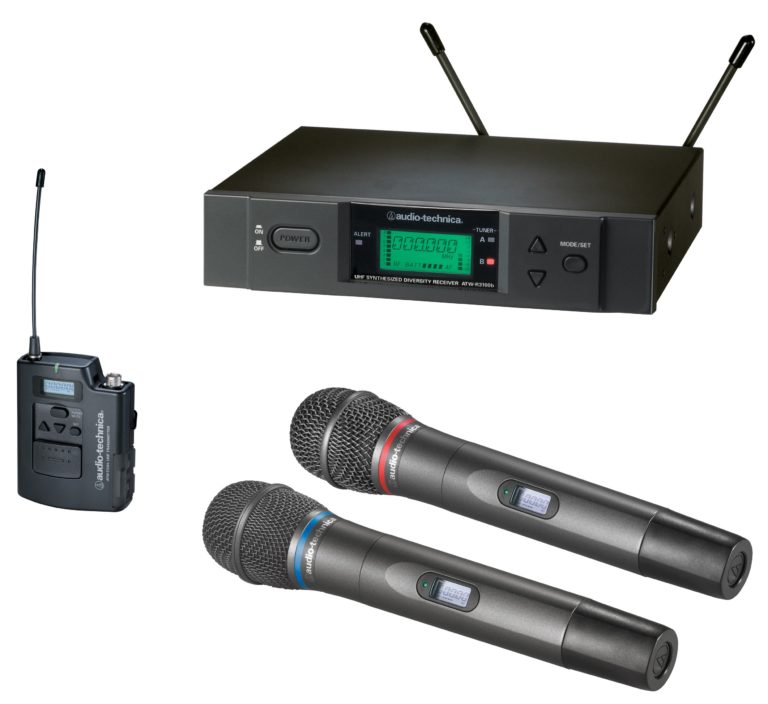Question: When should I consider using remote antennas for my wireless microphone systems?
Answer: The ¼ wave or ½ wave antenna included on a wireless microphone system receiver will work just fine in most applications. These antennas are reasonably efficient, convenient, inexpensive and just plain work. There are applications, however, where the antennas need to be moved some distance from the receiver for proper reception. When using a wireless system it is important to maintain a clear line of sight between the receiver and the transmitter. When this is not possible, remote mounting the antenna is necessary. For example, many business installations will place all audio equipment in an enclosed equipment room away from where the microphones will be used. The walls of this room will impede the line of sight. In these situations the receiver can stay in the equipment room, while the antennas are moved into the room where the microphones are used.
Another example of where line of sight cannot be maintained is in houses of worship and theaters that keep their wireless systems at the front of house (FOH) position with the mixing console and other equipment. Often, the wireless systems are placed in a rack under the mixing console desk. This presents a problem because the people standing between the FOH and the stage can block the transmitter’s radio frequency (RF) from reaching the receiver. Again, the receivers can stay in the rack, but the antennas must be moved to where there is no RF blockage.
In many installations, it is quite common for the wireless receivers to be installed inside a metal rack with metal doors. This can act much like a Faraday cage and block the RF from reaching the receiver. In this case it is important to get the antenna outside of the rack. Often this can be accomplished by simply using our Antenna Bulkhead Connecter Kit (ATW-BH1) to move the ¼ wave or ½ wave antenna to the top or side of the rack.

ATW-BH1
The need to extend the operating range of the wireless system is another situation where remoting the antenna is desirable. Our 3000 Series Wireless System, for example, has a typical operating range of 300 feet. But a user may want to cover more distance than that – a high school, say, that wants to mike the referee on its football field. This may be possible by moving the antenna closer to the playing field, thereby exceeding the system’s typical operating range.
 3000 Series
3000 Series
One other common scenario for remoting an antenna is when using multiple wireless systems. It can be quite efficient to combine all of the systems into a single pair of remote antennas using an antenna distribution system such as the ATW-DA49.

ATW-DA49
In an upcoming Question of the Week blog we’ll take a look at common remote antenna setups and the hardware needed to implement them. Until then, if you have any questions about setting up an antenna, feel free to contact our Audio Solutions Department.
















































































































































.webp)































